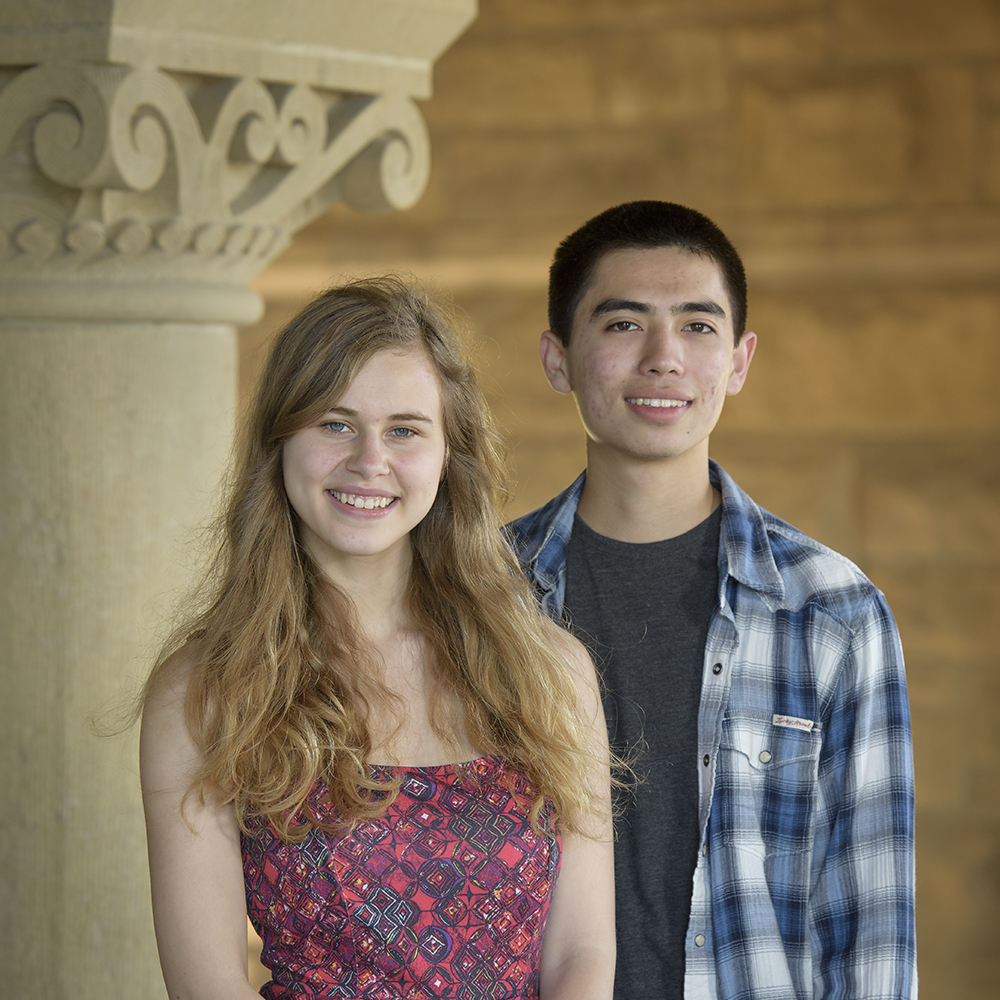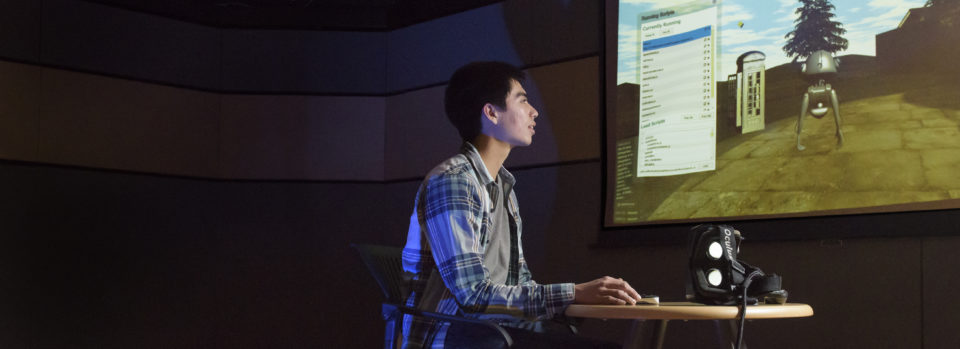Designing virtual reality to make real-world impacts
Sydney Maples and Max Spero build immersive virtual worlds to encourage empathy and change peoples' perspectives on climate change.
In a sparsely decorated room near the Main Quad, a student puts on a virtual reality helmet and finds herself herself transported to a seat on a city bus, surrounded by the passengers of the night, people with no other place to sleep.
The riders cling to their meager belongings, fearful that other passengers will steal them if they fall asleep. From the back of the bus, a ragged man shuffles up the aisle, walking toward the student.
The point of the study is to get you to empathize with people who do actually live this life every day.
Sydney Maples
As upsetting as the experience might seem, it ‘s actually designed to provoke a very different response. “The point of the study is to get you to empathize with people who do actually live this life every day,” said junior Sydney Maples, a symbolic systems major who is working on the project.
Much of this sophisticated research is carried out by sophomores, juniors and seniors, in step with Stanford’s emphasis on getting undergrads into the lab as well as the classroom.
The students in the program work in the lab about 10 hours per week and ensure that the environments are as true to life as possible – any glitches can disrupt the experience. A typical task for Maples: search for the bug that allowed one of the virtual passengers on that midnight bus to walk without moving his legs. “It was a bit hard to find,” she said. “But that always happens when you’re programming.”

Sydney Maples and Maxwell Spero, undergraduate researchers (Image credit: L.A. Cicero)
The lab has created several of these immersive empathy studies, from clear-cutting down a forest to experiencing poverty. In the latest scenario, participants snorkel in virtual tropical waters to witness the evolving damage that rising ocean temperatures and acidification is inflicting on coral reefs. Creating virtual scenarios that behave as designed is key to enforcing the immersive experiences.
Maples and the other students working in the Virtual Human Interaction Lab have learned their skills in an intensive training seminar. She compares learning to program to learning to play the guitar: “At first, it’s nothing, then there’s a feel for it, and then you write your own songs.” Long term, she’s interested in computational neuroscience and health policy.
She and her lab mates work to understand and improve the faintest of social cues and interactions in these scenarios, making them as life-like as possible. They hope to generate an empathetic reaction from the participant, whether it’s lending a helping hand to a poor person or reducing water usage.
Sophomore Max Spero, a computer science major, is a member of the undergraduate programming team at the lab. One of the ways the virtual experiences connect with people is by changing their perspective on life, sometimes quite literally. On one recent afternoon, Spero was tackling a proof-of-concept program that could shrink a person to the size of a shrimp in order to provide a different view of an underwater environment.
“It’s not easy,” he said, “because you can’t just scale up the entire world. That doesn’t make sense and it’s not feasible.”
When he’s not experimenting with a new 3D virtual community, Spero helps keep the lab’s cutting-edge equipment running, a contribution not missed by Professor Jeremy Bailenson, the director of the lab. When visitors to the lab ask, “Who does your engineering?” he has a ready reply: “Stanford sophomores working 10 hours a week. They are just spectacular.”

